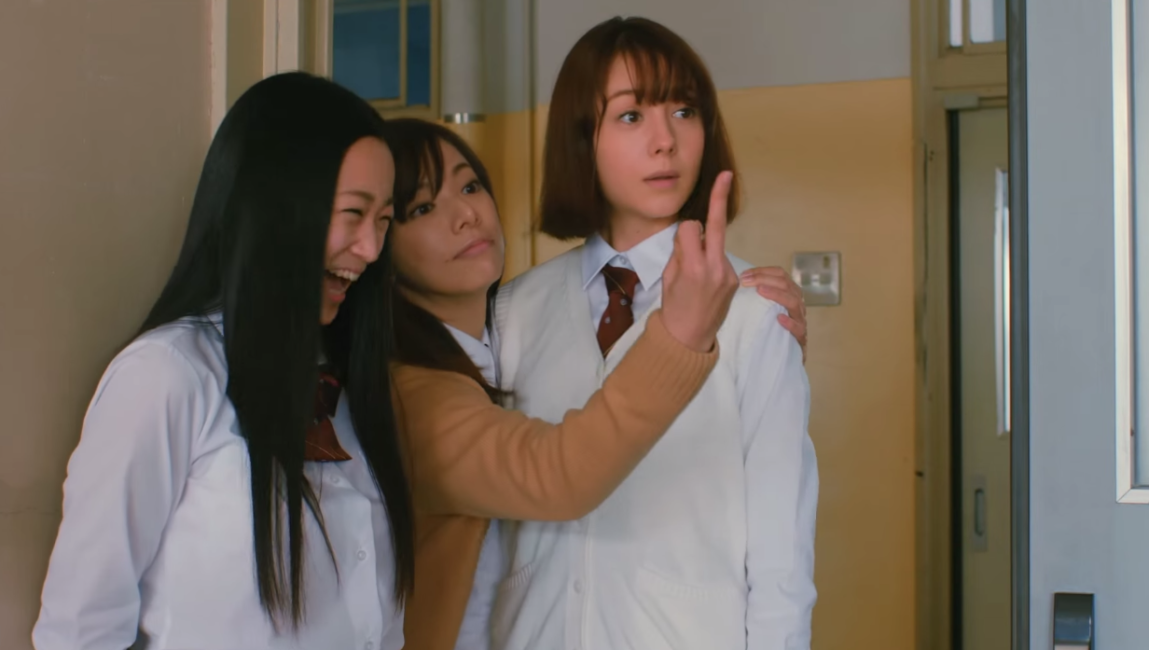The jarring, discordant tones present in Tag are established within just the film’s first few images, which juxtapose an ominous helicopter shot of school buses and the dissonant swell of a cello against carefree scenes of the teenage girls that reside inside, as they engage in pillow fights. Almost immediately, gales of razor-sharp wind slice the tops off the girls’ school buses, leaving only a baffled, terrified, and blood-soaked Mitsuko (Reina Triendi) to look wide-eyed at her bisected peers. Only in the demented world of Sion Sono could this be as simple and straightforward as things get, but as Mitsuko flees more attacks, she finds herself right back in class surrounded by her alive, perplexed friends. From there, she continues to slip through various realities, emerging into moments of brief calm that are swiftly disrupted by intense violence, sending her into the next warped cycle of her own personal hell. Sometimes, the poor girl cannot even hold onto her identity: she becomes a bride on her wedding day in one scene, and a marathon runner in another. If circumstances change, however, the basic repetitions of carnage and desperate progression never do.
Tag explores the morality of final girl narratives and serves to call into question the mindsets of those who indulge in them.
At times, Tag resembles the video game mechanics of Paul W.S. Anderson’s Resident Evil series. Like Anderson’s films, Sono’s finds the inherently cinematic properties of survival horror by taking the genre at face value. As such, the escalations of violence—teachers suddenly mowing down students with miniguns and grenade launchers, a deranged, perverted man with a squealing boar’s head–are played out in all their absurdity. But all of the manic camera movements eventually settle back on the anchoring point of Mitsuki’s face, as it absorbs more and more trauma. A final-act twist literalizes the subtext of Tag’s structure, but more importantly it also compounds the core contradiction underpinning a great deal of Sono’s work: that of his eager willingness to exploit his actresses (including a shot here of the deadly wind teasingly lifting up the main characters’ skirts) and his equally fervent enthusiasm for pointing out the way that Japanese society and pop culture treats women as objects. Taken with its subtle use of video game logic, Tag explores the morality of final girl narratives and serves to call into question the mindsets of those who indulge in them. Still, its most poignant moments do not concern the explorations of this theme but rather the fleeting moments of Mitsuko with her friends. These interactions, more so than Sono’s “have your cake and eat it too” approach to exploitation cinema, best illustrate the film’s ambitions.
This film has yet to be theatrically released in the U.S.







